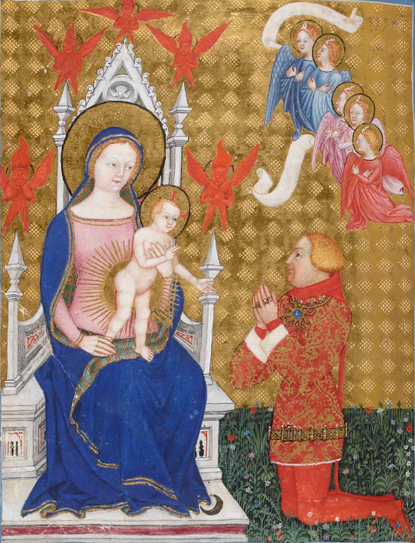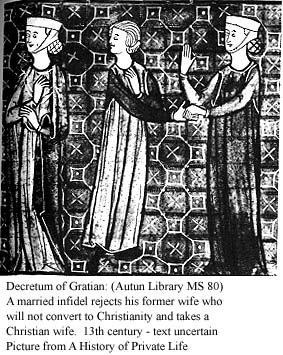First all thank you for posting the Latin - skimming it for key themes I'm interested in, I noticed that of the list of ancestors, Astatius is mentioned as living in the time of Numa (so another reason to single out Numa by Marziano, given this reference in Barizza).
More dear to my interests, I noticed Prudence is separated from the other cardinal virtues and placed with Piety and Clemency (reflected in the illumination; more on that below). Prudence allows the eye to discern the true from the transitory (Eius namque Prudentia patet in hoc, quia scivit discernere bona, vera, et solida a labentibus et caducis, quamquam haec delectent et perstringant oculos intuentiuni). This is also placed in the context of Julius Caesar's patience (he was the direct decedent of Venus - Augustus, a great nephew, merely being adopted by Julius), with that paragraph ending with one should despise vain-glory via one's Prudence, followed by a quote of Psalm's 117; that psalm begins with "Praise the Lord, all you nations; extol him, all you peoples" which is keeping with the mentioning of Gian Galeazzo's clemency in dealing with his fractious duchy. Prudence's mirror is usually angled upwards to behold God (i.e., one cannot look directly at Him), hence Piety, and Prudence is always linked to ruling, from Aquinas through all of the Trecento political theorists, hence Clemency.
You might also recall Bnf Lat. 757, f109v in this light, with Giangaleazzo praying to the Madonna and child of the Apocalypse (and I would also argue the PMB Sun radiate mask references this "Christological Sol"):Ross G. R. Caldwell wrote: 02 Apr 2020, 15:34 Detail of the 12 Virtues around which Pietro Castelletto based his sermon. He note that the number was inspired by Apocalypse XII (verse 1), "and upon her head a crown of twelve stars" (in capite eius corona stellarum duodecim, where eius can be "his" as well as "hers," which allows the image to apply to Gian Galeazzo as well).
I wrote up a summary of the virtues and the names in the genealogy after I hand-copied from the manuscript in 2003.
http://trionfi.com/visconti-genealogy
...
The order he gives them in are (bottom front) Faith, Hope, Charity.
Back left (Castelletto says "right", as if speaking from the point of view of the image), Justice, Fortitude, Temperance.
Front right (Castelletto "left") Prudence, Piety, Clemency.
Back right, Magnificence, Intelligence, Humility.

As for Prudence's placement in the Eulogy illumination, you'll note that Prudence is given pride of place right behind Mary and that her mirror is not tilted upwards but at Christ, since he is among them. At this point I'd also note the precedence for this position is in the similar arrangement of virtues (not just the canonical 7) around Robert, the Angevin ruler of Naples, in his Anjou Bible. She holds one of the four baldachin staffs along with the other cardinals, but looks directly at the orb on Robert's lap, who in turn looks in her direction. The orb seems to have been replaced by the haloed Christ in the Visconti illumination, but clearly prudence is in a privileged position in both illuminations.
I'll try to be brief here (and this is related to my long-winded yet not completed reply to Mike about the "World" as prudence), but the essence of this is Prudence sees the past, present and future - time - and she does that by observing the heavens, which all behave a in the perfect motion of the circle (basic Aristotelian astronomy here). The convex mirror (ignorantly misrepresented over time as a mirror directly peered into, confusing her with a vanity motif) reflects the heavenly brilliance, the unveiling of God's plan. Prudence in turn does not hold a compass because she is a mason, but because the circular movement of the heavens should be reflected in the properly ordered dominion on earth , mirroring the heavens. That is what happening with the Ferrara variation of Giotto's Prudence shown in the Dal Sale palazzo (aka Minerbi) - the Dal Sale were advisers to the d'Este and wanted to depict the virtue in terms of their role in the steersman-ship of the state; this prudence shows Ferrara and its contado inscribed within a perfect circle, harmonizing with the heavens (why tarot's "Worlds" are set in tondos). In a similar vein, another Ferrarese diplomat courtier and adviser to the d'Este had a medal struck in the middle of the 15th century whose reverse focuses on Prudence's convex mirror angled towards the heavens (Sperandio, Manfredi medal, 1463, Prudence Seated on Two Hounds Holding Manfredi Shield, Rx, NGA)
All of this goes back to the Beatific Vision controversy of the early Trecento, a time when we find Prudence more explicitly tied to the circular motions of the heavens in the form of an armillary sphere, versus the compass (the meaning of either attribute is complimentary - the compass simply became more fashionable in the 15th century, and did not allow confusion with the central liberal art of Astronomy, who also holds an armillary sphere, not to mention a compass was simply easier to draw than the three-dimensionally complex armillary sphere). Below are four Trecento examples of Prudence with armillary sphere in Florence and its contado: ceiling fresco, T. Gaddi, Cappella Baroncelli, S. Croce, Florence (1333); wall fresco by di Cino in Cattedrale di S. Zeno, Pistoia,(1347); Biondo altarpiece, S. Croce, Flroence (1379), wall fresco by Cenni, S. Miniato (1393):
Prudence's allegorical viewing of the celestial circles was first illuminated by Francesco da Barberino around the same time as Giotto invented the compass attribute when they were both in Padua along with the astrologer d'Abano; in regard to which see the brilliant article by Eva Frojmovič, "Giotto's Circumspection", The Art Bulletin, Vol. 89, No. 2 (Jun., 2007), pp. 195-210; jstor link: https://www.jstor.org/stable/25067314?seq=1 ). Barberino shows prudence shielding her eyes (in lieu of reflecting the heavens into a mirror), while staring into the concentric heavens; a second illumination in that same work (Documenta d'Amore) shows a detail of the concentric universe with Circumspectio, a part of Prudence per Aquinas, being able to view all around the orb of earth at the center of the heavens. Finally the "clubs" (actually tubes with eyes) stuck into the eyes of the allegorical figure over the Scrovegni's entrance into their famous chapel, opposite a fool symbol (with Prudence herself on the opposite wall to this entrance), is but an abridged form of the circumspection symbol (again see Frojmovič) - an allegorical message of the right way to view the virtues and vices in the chapel, ultimately in an eschatological context (the Last Judgement fresco at one end of the chapel).
Phaeded




